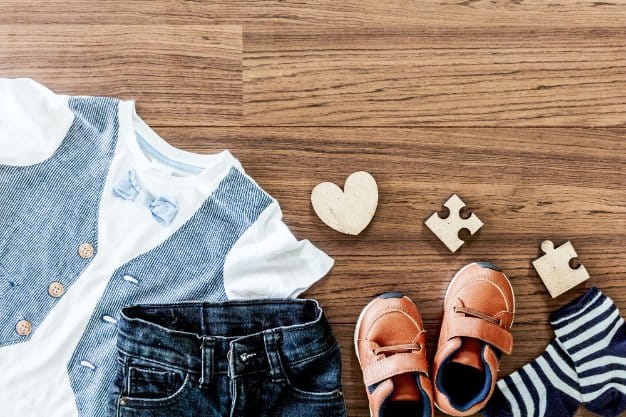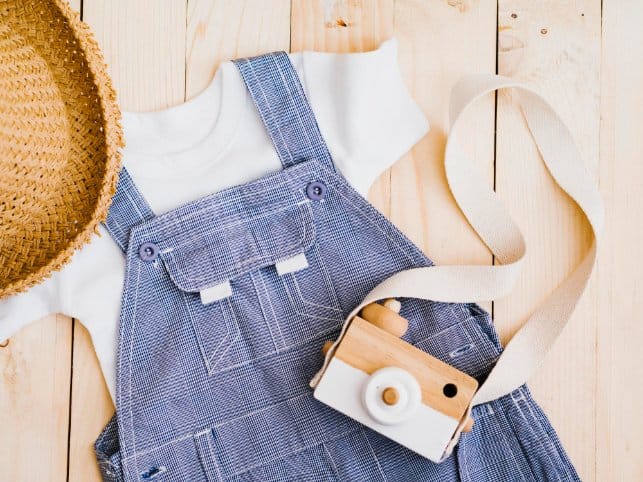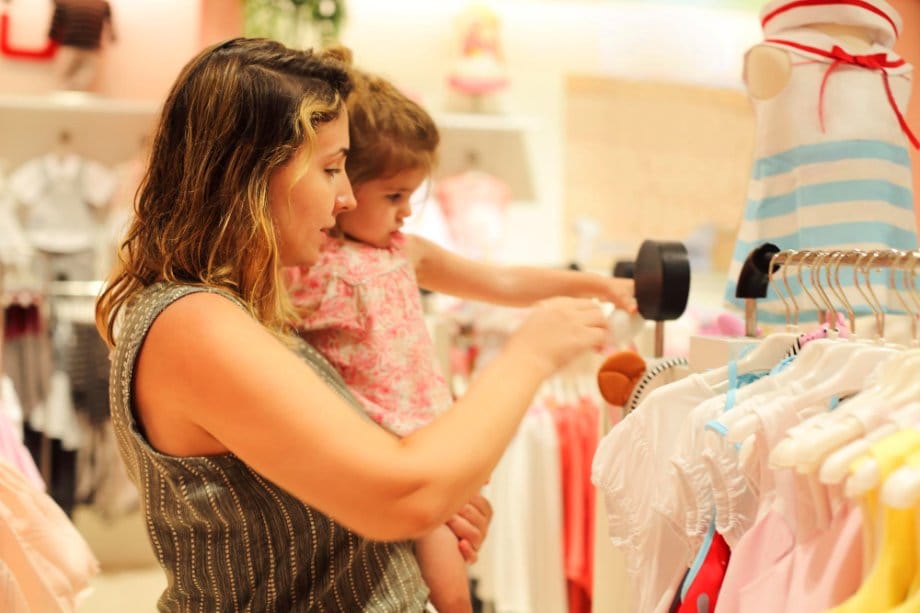Your comprehensive resource for choosing the perfect clothes that support your toddler’s growth, safety, and self-expression
📋 Table of Contents
Finding the perfect clothes for toddlers involves much more than just picking cute outfits. Parents need to balance comfort, safety, developmental support, and style while considering rapid growth spurts and active play. Quality toddler clothing should be made from soft, safe materials that allow freedom of movement while withstanding the wear and tear of daily adventures.
Today’s market offers countless choices for toddler clothing, from everyday basics to special occasion outfits. Popular retailers provide affordable options, while sustainable brands using organic materials are becoming more widely available for parents seeking eco-friendly alternatives.
🌟 Quick Start Guide
What are 5 things to look for in toddler clothing?
- Safety features: No small parts, secure fasteners, flame-resistant sleepwear
- Easy-on design: Elastic waistbands, wide necklines, minimal buttons
- Comfortable fabrics: Soft, breathable materials like cotton blends
- Appropriate fit: Room to move and grow without being too loose
- Durability: Well-constructed seams and quality materials for active play
Essentials of Toddler Clothing

Toddler clothing needs to be practical, comfortable, and durable to keep up with active little ones. Understanding sizing, fabrics, and essential items helps parents build a functional wardrobe that supports their child’s development.
Understanding Toddler Sizes
Toddler sizes typically range from 2T to 5T, with the “T” standing for toddler. Unlike baby clothes sized by months, toddler clothing uses this different system to accommodate growing bodies and diaper room.
🔧 Size Comparison Tool
Struggling to find equivalent sizes across different brands? Use our interactive brand size comparison tool to compare sizes between Carter’s, H&M, Target, Gap, and other popular toddler clothing brands.
2T (18-24 months)
Height: 32-35 inches
Weight: 25-28 lbs
Best for: New walkers, diaper room needed
3T (2-3 years)
Height: 35-38 inches
Weight: 28-32 lbs
Best for: Active toddlers, potty training
4T (3-4 years)
Height: 38-41 inches
Weight: 32-36 lbs
Best for: Independent dressing skills
5T (4-5 years)
Height: 41-44 inches
Weight: 36-42 lbs
Best for: Pre-school, advanced motor skills
💡 Sizing Pro Tip
Should you buy toddler clothes a size up? Yes, buying slightly larger sizes is smart for growing toddlers. A size too large is better than too small, and most toddlers grow quickly. However, avoid going more than one size up, as overly loose clothing can be unsafe and hinder movement.
Need help comparing sizes across brands? Our toddler size comparison tool shows equivalent sizes between popular brands, making it easier to shop confidently across different retailers.
Choosing The Right Fabrics
Cotton remains the gold standard for toddler clothing due to its softness, breathability, and durability. Organic cotton options work particularly well for children with sensitive skin.
Stretchy fabrics with some elastane or spandex help accommodate active toddlers who are constantly climbing and exploring. These blends provide comfort and freedom of movement essential for developmental activities.
Fabric Comparison Chart
| Fabric Type | Benefits | Best For | Care Level |
|---|---|---|---|
| 100% Cotton | Breathable, soft, absorbent | Everyday wear, sensitive skin | Easy |
| Cotton Blends | Stretch, durability, easy care | Active play, frequent washing | Very Easy |
| Organic Cotton | Chemical-free, hypoallergenic | Sensitive skin, eco-conscious | Easy |
| Merino Wool | Temperature regulating, antibacterial | Cold weather, outdoor play | Moderate |
Essential Wardrobe Items
What clothes do toddlers need? A well-stocked toddler wardrobe should include versatile basics that can be mixed and matched:
Complete Toddler Wardrobe Checklist
| Item | Quantity | Priority | Notes |
|---|---|---|---|
| T-shirts/Tops | 7-10 | Essential | Mix of long and short sleeve |
| Pants/Leggings | 5-7 | Essential | Elastic waistbands preferred |
| Shorts | 3-5 | Seasonal | Summer or warm climates |
| Pajamas | 4-6 sets | Essential | Flame-resistant required |
| Underwear | 8-10 | Post-potty training | Easy pull-on styles |
| Socks | 10-12 pairs | Essential | Non-slip soles helpful |
| Outerwear | 2-3 pieces | Climate dependent | Light jacket + heavy coat |
🎯 What would a 2-year-old specifically need?
Two-year-olds are at a unique developmental stage where they’re gaining independence but still need support. Focus on:
- Easy-on clothing: Elastic waistbands, slip-on shoes
- Potty training friendly: Pull-up pants, easy-access designs
- Safety features: No drawstrings, secure buttons
- Comfort for active play: Stretch fabrics, reinforced knees
- Self-expression items: Favorite character shirts, fun patterns
Supporting Development Through Clothing
Clothing choices play a crucial role in supporting toddler development. The right garments can foster independence, motor skill development, and confidence while ensuring safety and comfort.
Developmental Milestones and Clothing
Early Independence: Toddlers begin helping with dressing by holding up arms for shirts and sticking out feet for shoes. Choose clothes with wide openings and minimal fasteners.
Undressing Skills: Children can remove socks, shoes, and hats independently. They may start taking off loose shirts. Prioritize safety features to prevent unsafe undressing.
Basic Dressing: Can remove pants with elastic waistbands and put on simple items like socks. Introduce clothing with large buttons for fine motor practice.
Independent Attempts: Tries to put on shirts and pants independently. May need help with orientation (front/back). Use visual cues like labels and patterns.
Dressing Independence: Can dress themselves in simple clothing including zippers and large buttons. Still needs help with small fasteners and shoe tying.
Complete Independence: Masters most dressing skills except complex fasteners. Can choose weather-appropriate clothing and understand front/back orientation.
🧠 At what age do toddlers put their own clothes on?
Most toddlers begin attempting to dress themselves around 2-3 years old, with full independence typically achieved by age 4-5. However, every child develops at their own pace. Support their efforts with patience and age-appropriate clothing choices.
Features That Promote Independence
Choosing clothing with specific features can significantly support your toddler’s developing independence and motor skills:
- Elastic waistbands: Enable independent bathroom trips and dressing
- Wide necklines: Prevent getting stuck when putting on shirts
- Front-opening garments: Easier to manage than over-the-head styles
- Large zippers: Develop fine motor skills and hand coordination
- Velcro closures: Build confidence before transitioning to laces
- Visual cues: Tags at the back, patterns on the front help with orientation
2025 Toddler Fashion Trends
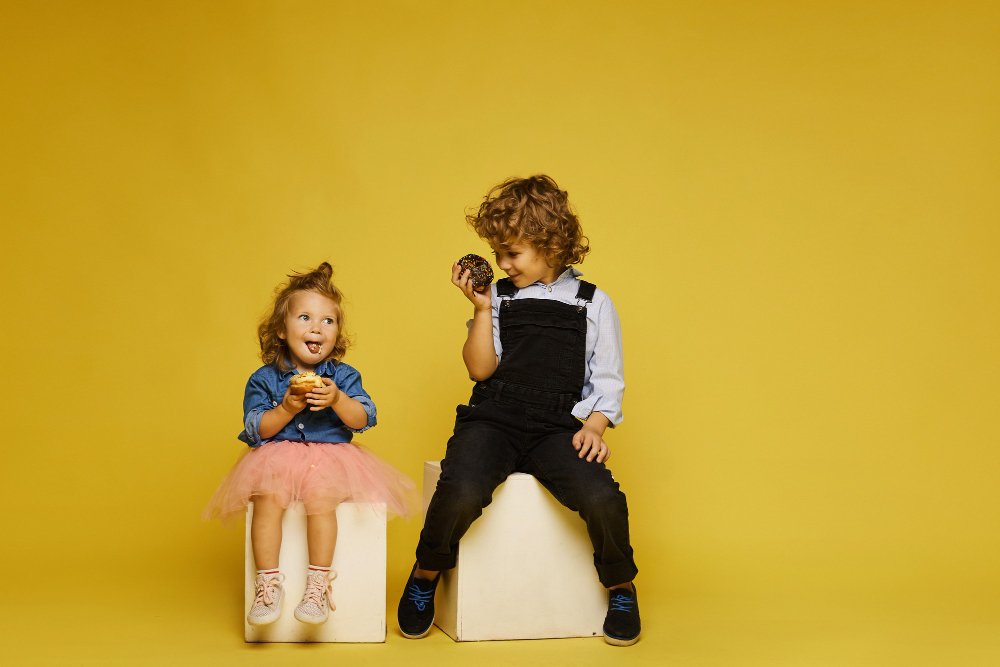
The 2025 toddler fashion scene combines playful innovation with practical functionality. This year’s trends focus on self-expression, sustainability, and developmental support.
🎨 Dopamine Dressing
Bright, mood-boosting colors dominate 2025. Think vibrant yellows, electric blues, and coral pinks that spark joy and encourage self-expression. These eye-catching hues are perfect for confident toddlers who love to stand out.
🌸 Soft Pastels
Gentle, soothing tones create a dreamy, modern look. Soft pinks, baby blues, and lavender work like “visual lullabies” helping kids feel calm after active play while remaining stylish and contemporary.
🏠 Cottage Core Charm
Embracing timeless craftsmanship with delicate embroidery, hand-stitched details, and natural fabrics. Think puff sleeves, scalloped edges, and intricate lace trims that blend vintage charm with modern comfort.
🔄 Y3K Futuristic
Tech-inspired elements like color-changing fabrics, glow-in-the-dark prints, and interactive textures. These innovative features captivate toddlers while introducing them to modern technology through play.
👕 Oversized Comfort
Baggy silhouettes and oversized fits dominate 2025. Roomy hoodies, relaxed pants, and loose t-shirts provide comfort for active play while allowing room for growth spurts.
🌈 Gender-Neutral Design
Breaking traditional boundaries with inclusive designs that work for all children. Neutral colors, versatile patterns, and unisex styling promote individual expression without constraints.
Sustainable Fashion Movement
2025 marks a significant shift toward sustainable toddler fashion. Parents increasingly choose eco-friendly options that benefit both their children and the environment:
- GOTS-certified organic cotton: Free from harmful pesticides and chemicals
- Recycled materials: Repurposed plastic bottles and textile waste
- Natural dyes: Plant-based coloring that’s safer for sensitive skin
- Ethical manufacturing: Fair trade practices and transparent supply chains
- Durability focus: Well-made pieces designed to last through multiple children
Types of Toddler Clothes
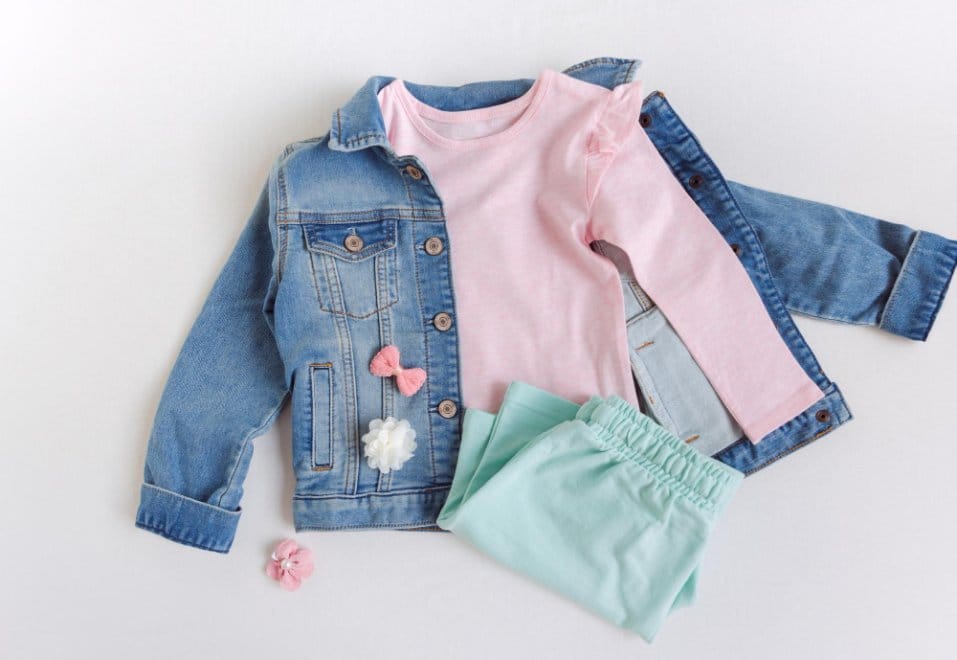
Toddler clothing combines functionality with style, offering options that support active play while keeping little ones comfortable. The right wardrobe includes everyday basics and special pieces that adapt to rapidly growing bodies.
Tops and T-Shirts
Toddler tops form the foundation of any child’s wardrobe. Graphic tees featuring favorite characters, animals, or playful sayings remain extremely popular for both boys and girls. Look for tops with envelope necklines or snap shoulders that make dressing easier for wiggly toddlers.
Cotton t-shirts provide breathability for active play, while long-sleeve options offer protection from sun or additional warmth. Modern designs often feature:
- Stretchy fabrics that move with your child
- Reinforced seams for durability during active play
- Tagless designs to prevent skin irritation
- Easy closures like snaps for quick diaper changes
Bottoms: Pants and Leggings
Toddler bottoms need to withstand crawling, climbing, and countless tumbles. Leggings have become a wardrobe staple due to their stretchy comfort and easy-on design. For all genders, joggers with elastic waistbands provide similar benefits.
When selecting pants, look for:
- Adjustable waistbands to accommodate growth spurts
- Soft, stretchy blends for comfort during movement
- Reinforced knees for crawlers and climbers
- Pull-on styles without complicated fasteners
🚽 Potty Training Considerations
Are 2-year-olds potty trained? Most children begin potty training between 2-3 years old, though readiness varies. Choose clothing that supports this transition:
- Easy-to-pull-down pants with minimal buttons
- Elastic waistbands that small hands can manage
- Training pants or underwear with fun designs
- Avoid overalls or complex fasteners during training
Dresses and Skirts
Dresses offer versatility, functioning as complete outfits with minimal fuss. T-shirt dresses provide playground-friendly comfort, while more structured styles work for special events.
Popular dress features include:
- Built-in shorts or bloomers for active play
- Twirl-friendly designs that delight spinning toddlers
- Machine-washable fabrics that handle spills
- Adjustable features that extend wear through growth
Outerwear: Jackets and Sweaters
Toddler outerwear balances warmth with ease of movement. Lightweight jackets with zip fronts work well for spring and fall. During winter months, look for coats with:
- Simple closures manageable by small hands
- Extended cuffs that prevent sleeves from riding up
- Attached hoods that stay put during play
- Weather-resistant materials for outdoor adventures
Sleepwear and Undergarments
Safe, comfortable sleepwear is essential for toddlers who need quality rest for development. Flame-resistant or snug-fitting pajamas meet safety requirements while providing comfort.
💤 How many pairs of pajamas should a toddler have?
Most families need 4-6 pairs of pajamas for toddlers. This allows for washing cycles, accidents, and seasonal variety. Include both lightweight and warmer options depending on your climate.
Footwear for Toddlers

Choosing the right shoes for toddlers requires balancing comfort, support, and durability. Proper footwear protects developing feet while allowing natural movement and growth.
Daily Wear: Sneakers and Sandals
Sneakers are essential for active toddlers who love to run, jump, and explore. Look for lightweight options with flexible soles that bend easily at the ball of the foot, supporting natural foot development.
⚠️ Should toddlers learn to walk with or without shoes?
Should toddlers be barefoot at home? Yes! Barefoot walking is ideal for developing balance, coordination, and foot strength. Save shoes for outdoor protection and cold surfaces. At home, barefoot or non-slip socks work best.
For warmer weather, sandals provide good airflow while protecting little feet. Closed-toe sandals offer more protection for playground adventures.
Choosing the Right Size
Toddler Shoe Size Guide
| Age Range | Typical Size | Foot Length | Notes |
|---|---|---|---|
| 12-18 months | 4-6 | 4.5-5.5 inches | First walking shoes |
| 18-24 months | 6-7 | 5.5-6 inches | Confident walking |
| 2-3 years | 7-9 | 6-6.75 inches | Active running/jumping |
| 3-4 years | 9-11 | 6.75-7.5 inches | More structured activities |
👟 Are Crocs good for first walkers?
Crocs can be suitable for toddlers in specific situations like water play or quick outdoor trips. However, they shouldn’t be the primary shoe choice for developing walkers. Look for shoes with more structure and grip for daily wear.
Are high tops bad for toddlers? High-top shoes can restrict ankle movement, which is important for developing balance and coordination. Low-cut, flexible shoes are generally better for toddlers learning to walk and run.
Accessorizing Toddler Outfits
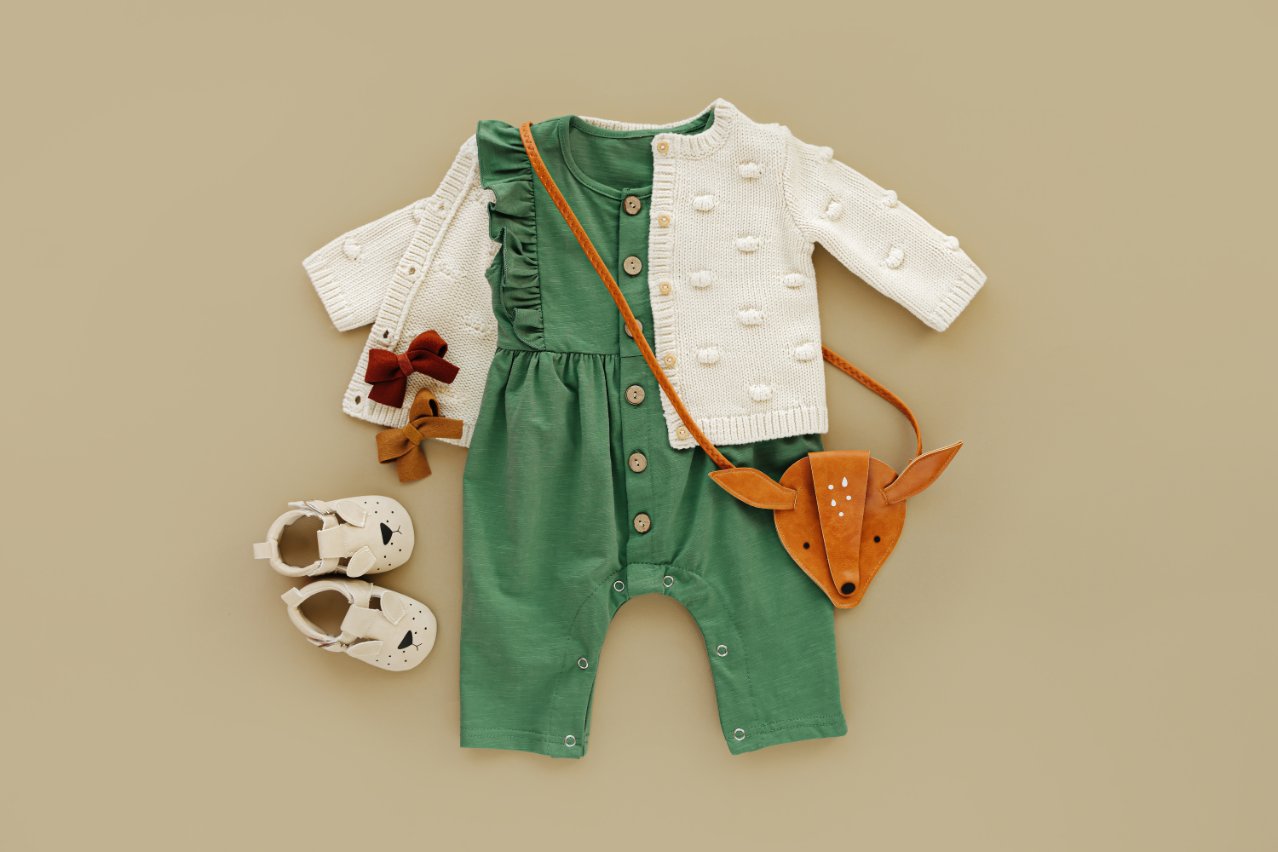
Accessories can transform simple toddler outfits into stylish ensembles while serving practical purposes. The right accessories add personality while supporting development and comfort.
Functional Accessories
Backpacks designed for toddlers serve as both fashion statements and practical tools. Choose smaller-sized backpacks with simple closures that tiny hands can manage. Look for designs with safety features like name tags and reflective strips.
Hats provide essential sun protection while adding style. Wide-brimmed sun hats in summer and snug beanies in winter keep little heads protected from the elements.
Decorative Accessories
Hair accessories can enhance any toddler outfit. Soft headbands, small clips, and gentle elastics work well for various hair types. Select accessories without small detachable parts that could pose choking hazards.
🎭 Do toddlers like dress up?
What age do toddlers like to dress up? Most toddlers begin enjoying dress-up play around 18-24 months, with peak interest typically occurring between ages 2-4. This imaginative play supports creativity, social skills, and self-expression.
Seasonal Clothing Guide
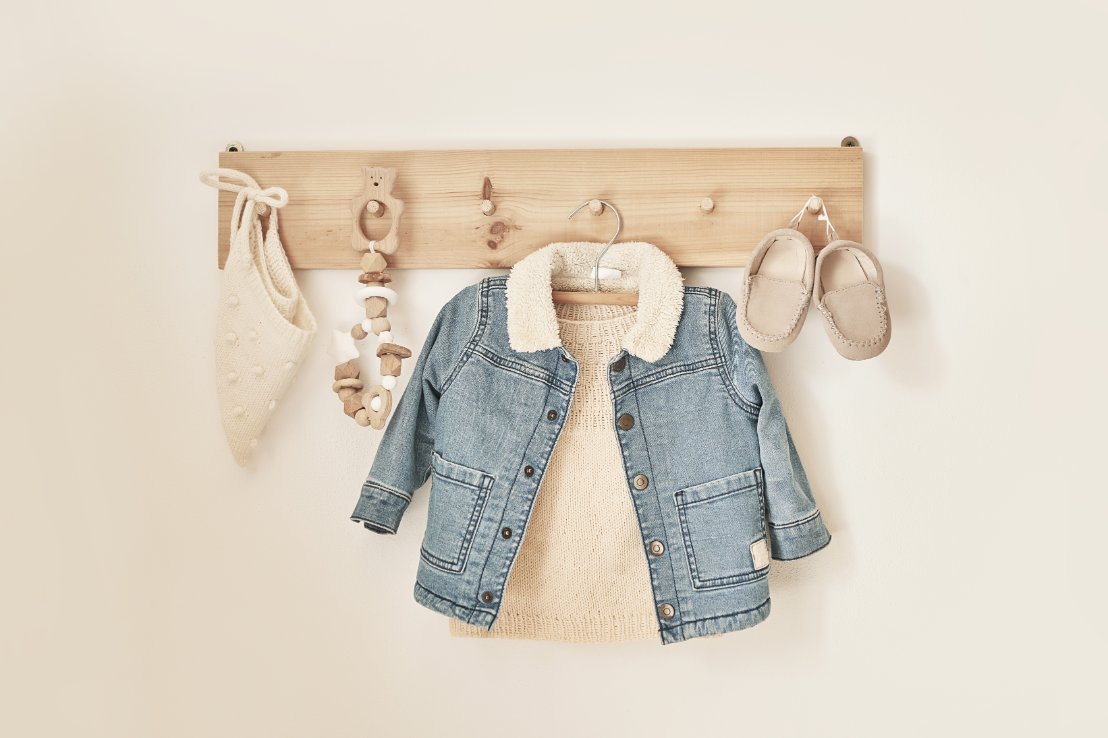
Parents need to adapt their toddler’s wardrobe as seasons change. The right clothing keeps little ones comfortable while allowing them to express their developing personalities.
Summer Essentials
Summer calls for lightweight, breathable fabrics that keep toddlers cool during warm weather activities. Cotton bodysuits form the foundation of any summer wardrobe, offering all-in-one convenience.
Essential summer items include:
- Lightweight rompers: One-piece convenience for hot days
- Cotton t-shirts: Breathable and easy to layer
- Comfortable shorts: Allow freedom of movement
- Sun hats: Essential protection for outdoor play
- Swimwear with UPF protection: Built-in sun safety
Winter Must-Haves
Winter requires layering to keep toddlers warm while allowing adjustments for temperature changes. Long-sleeve bodysuits work well as base layers in colder months.
🧥 How many layers to dress a toddler in?
Use the “one extra layer” rule: dress your toddler in one more layer than you’re wearing. This typically means:
- Base layer: Cotton bodysuit or t-shirt
- Middle layer: Sweater or sweatshirt
- Outer layer: Coat or jacket for outdoor activities
- Accessories: Hat, mittens, warm socks
Dressing Toddlers for Special Occasions
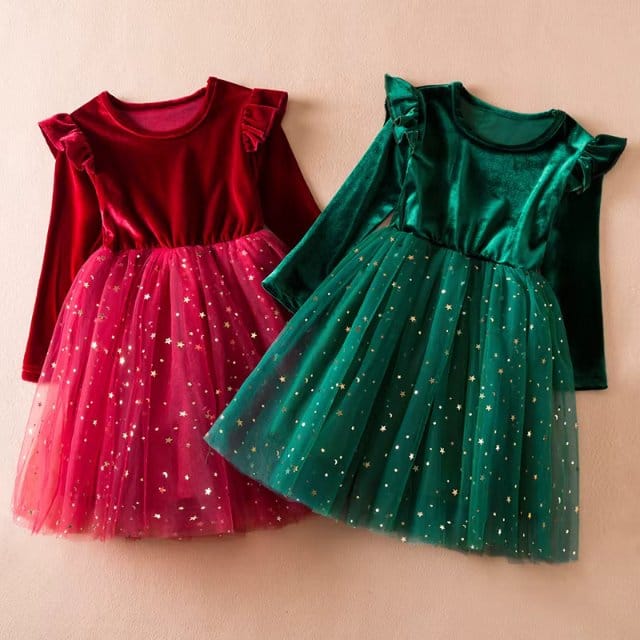
Special occasions call for adorable outfits that make toddlers look their best while keeping them comfortable enough to enjoy the event. Finding the right balance between style and practicality is key.
Holiday Attire
Holiday attire for toddlers should reflect the festivity while ensuring comfort. For winter holidays, velvet dresses with tights or small suits with bow ties create a festive look without sacrificing comfort.
Consider layering options for unpredictable temperatures. A cute cardigan over a holiday dress allows for easy adjustment as needed throughout the celebration.
Formal Events
Weddings, religious ceremonies, and upscale family events require truly special attire. Investing in one quality outfit often makes more sense than multiple cheaper options.
For formal occasions:
- Girls: Dresses with tulle overlays, satin sashes, or delicate embroidery
- Boys: Mini suits or dress pants with suspenders and crisp shirts
- Footwear: Patent leather Mary Janes or loafers that photograph beautifully
- Backup plan: Pack a comfortable change of clothes for after photos
Sustainable and Ethical Choices
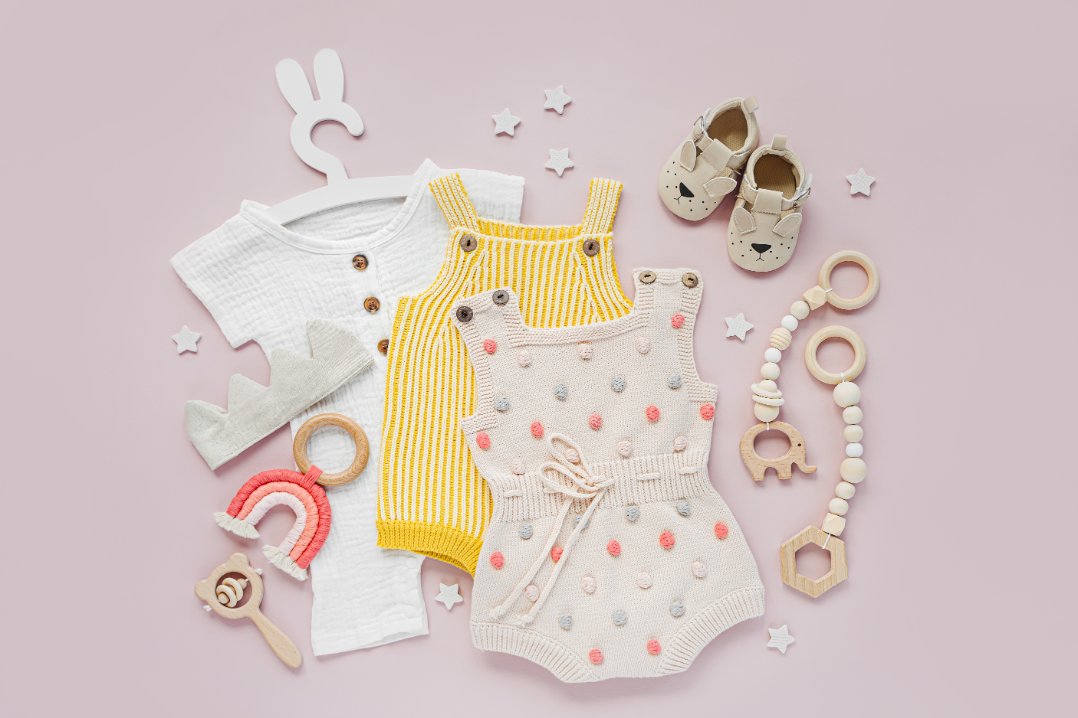
Eco-friendly toddler clothing options have expanded significantly. Parents can now find high-quality, sustainable pieces that are gentler on sensitive skin and the environment.
What to Look For
- GOTS-certified cotton: Ensures organic farming and ethical processing
- OEKO-TEX Standard 100: Tests for harmful substances in textiles
- Bluesign certification: Comprehensive sustainability standard
- Recycled materials: Reduces environmental impact
- Local production: Supports community and reduces shipping emissions
🌱 Benefits of Sustainable Toddler Clothing
Choosing sustainable options provides multiple benefits:
- Health: Fewer chemicals means less risk of skin irritation
- Durability: Higher quality construction lasts longer
- Environment: Reduces pollution and waste
- Ethics: Supports fair labor practices
- Future: Teaches children about responsible consumption
Safety Considerations in Toddler Wear
When shopping for toddler clothing, safety should always be the top priority. Children’s clothes should never have cords or drawstrings around the hood and neck area as these pose serious strangulation risks.
⚠️ Critical Safety Features to Avoid
- Drawstrings on hoodies or pants – strangulation hazard
- Small, loose buttons or beads – choking hazard
- Long belts or sashes – can wrap around neck or limbs
- Loose-fitting clothes – can catch on playground equipment
- Excessively long pants – tripping hazard
Check all buttons, snaps, and decorative elements to ensure they’re securely attached. Small parts that can detach easily become choking hazards for curious toddlers.
For daily outings, choose brightly colored clothing, especially in red or yellow. These vibrant colors make toddlers more visible to motorists and easier to spot in crowded places.
Flame Resistance Requirements
All children’s sleepwear must meet federal flammability standards. Look for labels indicating flame resistance or choose snug-fitting cotton pajamas as an alternative.
Smart Shopping Tips
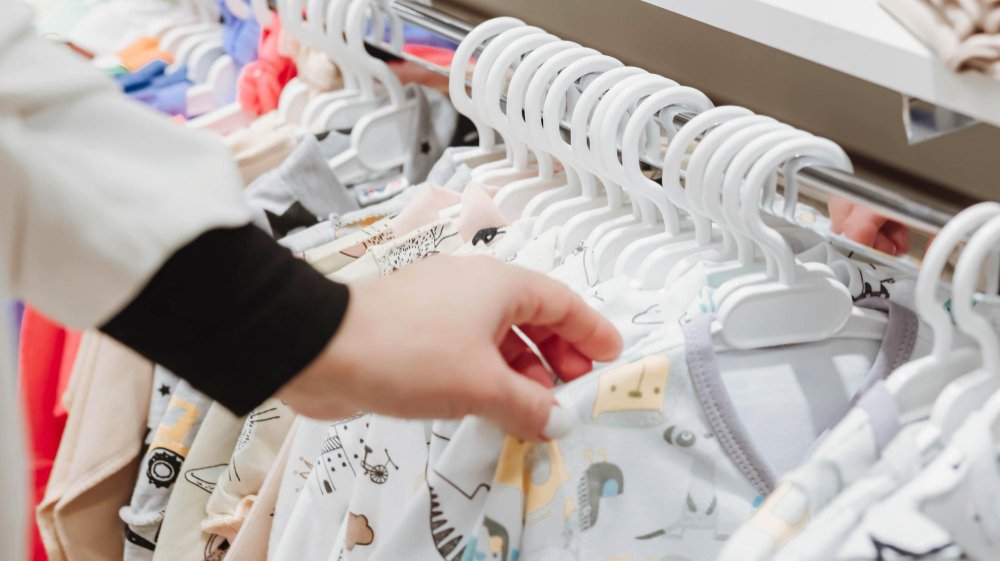
Finding the right clothes for toddlers involves balancing quality, price, and sustainability. Today’s market offers numerous options from mainstream retailers to boutique brands.
Finding the Best Deals
Many stores offer loyalty programs that provide additional savings through points or special member pricing. Consider joining email lists for brands to receive alerts about flash sales and exclusive discounts.
End-of-season clearances are perfect for buying next year’s sizes at steep discounts. Online shopping often yields better deals than in-store purchases, especially with coupon codes and free shipping offers.
🛒 Smart Shopping Strategy
Before shopping across different brands, check our brand-specific size comparison tool to understand how sizes vary between retailers. This prevents ordering the wrong size and saves on return shipping costs.
💰 Money-Saving Strategies
- Buy multipacks of basics like t-shirts and underwear
- Shop consignment shops for gently used items
- Create clothing swaps with other parents
- Invest in quality basics that can be passed down
- Consider affordable baby clothes from trusted retailers
Quality vs. Quantity
Buying higher quality, sustainable pieces may cost more initially but often lasts through multiple children. Many eco-conscious brands design clothes for durability and adjustable fits that grow with your child.
Care and Maintenance
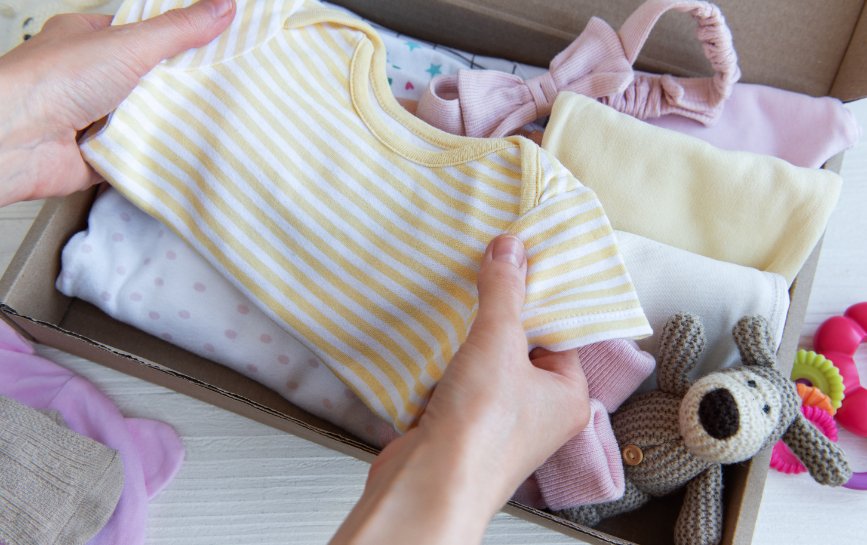
Keeping up with toddler laundry can feel like a never-ending task. Washing each item properly helps maintain quality and safety.
Washing Guidelines
For best results, separate light and dark colors before washing. This prevents darker items from bleeding onto lighter cotton pieces.
Temperature matters when washing kids’ clothes. Use 30-40°C (86-104°F), which is hot enough to remove dirt but gentle enough to protect fabrics and colors.
Stain Treatment Guide
| Stain Type | Treatment | Temperature | Special Notes |
|---|---|---|---|
| Food stains | Pre-treat with enzyme detergent | Cold water soak first | Work from outside in |
| Grass stains | Rubbing alcohol or white vinegar | Warm water | Let treatment sit 10 minutes |
| Blood stains | Hydrogen peroxide or cold water | Cold only | Never use hot water |
| Mud stains | Let dry, brush off, then wash | Warm water | Don’t rub wet mud |
Complete Size Guide and Growth Planning
Understanding how toddler sizes work helps parents make smart purchasing decisions and plan for growth spurts.
Size Conversion Chart
| US Size | Age Range | Height (inches) | Weight (lbs) | Chest (inches) |
|---|---|---|---|---|
| 18M | 12-18 months | 30-32 | 22-25 | 19-20 |
| 2T | 18-24 months | 32-35 | 25-28 | 20-21 |
| 3T | 2-3 years | 35-38 | 28-32 | 21-22 |
| 4T | 3-4 years | 38-41 | 32-36 | 22-23 |
| 5T | 4-5 years | 41-44 | 36-42 | 23-24 |
📏 Measuring Tips
How do infant clothes sizes work? Infant sizes are based on months (3M, 6M, 9M), while toddler sizes use the “T” system. The transition typically happens around 18-24 months when children are walking and need different proportions.
Compare across brands: Use our comprehensive size comparison tool to see how different brands’ sizing compares, helping you make confident purchases whether shopping online or in-store.
Frequently Asked Questions
What do toddlers need most? Comfort, safety, and ease of movement are priorities. Focus on soft fabrics, secure fasteners, and designs that support independence. Essential items include comfortable play clothes, safe sleepwear, and weather-appropriate outerwear.
A practical wardrobe for a 2-year-old includes: 7-10 tops, 5-7 bottoms, 4-6 pajama sets, 8-10 underwear (if potty trained), 10-12 pairs of socks, and 2-3 outerwear pieces. Adjust quantities based on laundry frequency and lifestyle.
How do I dress my 2-year-old? For daily wear, choose comfortable, easy-to-clean clothes. For special occasions, balance style with comfort – avoid scratchy fabrics or restrictive fits. Always prioritize safety features regardless of the occasion.
How many outfits to pack for a toddler? Pack one outfit per day plus 2-3 extras for accidents. Include: mix-and-match pieces, layers for weather changes, comfortable shoes, sleepwear, and a special comfort item. Roll clothes to save space.
This is normal developmental behavior! Toddlers remove clothes to assert independence, explore their bodies, or because they’re uncomfortable. Ensure clothes fit properly, aren’t too warm, and consider if they need to use the bathroom.
Safety is the most important requirement. This includes flame-resistant sleepwear, no small parts that could be choking hazards, no drawstrings, secure fasteners, and appropriate fit that doesn’t restrict movement or pose tripping risks.
Children can begin helping with laundry around age 3-4 by sorting colors and putting clothes in hampers. By age 6-8, they can learn to use washing machines with supervision. Full independence typically develops around age 10-12.
Conclusion
Creating the ideal toddler wardrobe requires balancing multiple factors: safety, comfort, development support, style, and practicality. The key is choosing versatile, high-quality pieces that grow with your child while supporting their independence and self-expression.
🎯 Essential Recommendations
Prioritize Safety First: Always check for secure fasteners, avoid drawstrings, ensure flame-resistant sleepwear, and choose bright colors for visibility. Safety should never be compromised for style.
Support Development: Select clothing with features that promote independence like elastic waistbands, wide necklines, and simple closures. These choices help toddlers develop confidence and motor skills.
Invest in Quality Basics: Build a foundation of well-made, versatile pieces in soft, breathable fabrics. Quality items last longer, providing better value and comfort.
Embrace Sustainable Choices: Consider eco-friendly options that benefit both your child’s health and the environment. Look for GOTS-certified organic cotton and ethical manufacturing practices.
Plan for Growth: Buy slightly larger sizes and choose adjustable features. Focus on cost-per-wear rather than initial price, and consider clothing swaps with other families.
🌟 Looking Ahead
The 2025 toddler fashion landscape offers exciting opportunities to combine style with functionality. From tech-integrated fabrics to sustainable materials, parents have more choices than ever to create wardrobes that reflect their values while meeting their children’s needs.
Remember that the best toddler clothing supports your child’s unique personality and developmental stage while keeping them safe, comfortable, and confident. Whether you’re shopping for everyday basics or special occasion outfits, let your toddler’s needs and preferences guide your choices.
Final tip: Involve your toddler in age-appropriate clothing choices when possible. This builds decision-making skills and ensures they feel comfortable and confident in their clothes. After all, happy toddlers in comfortable clothes make for easier days and precious memories.
📚 Additional Resources
For more helpful information about toddler clothing and care:
References:

